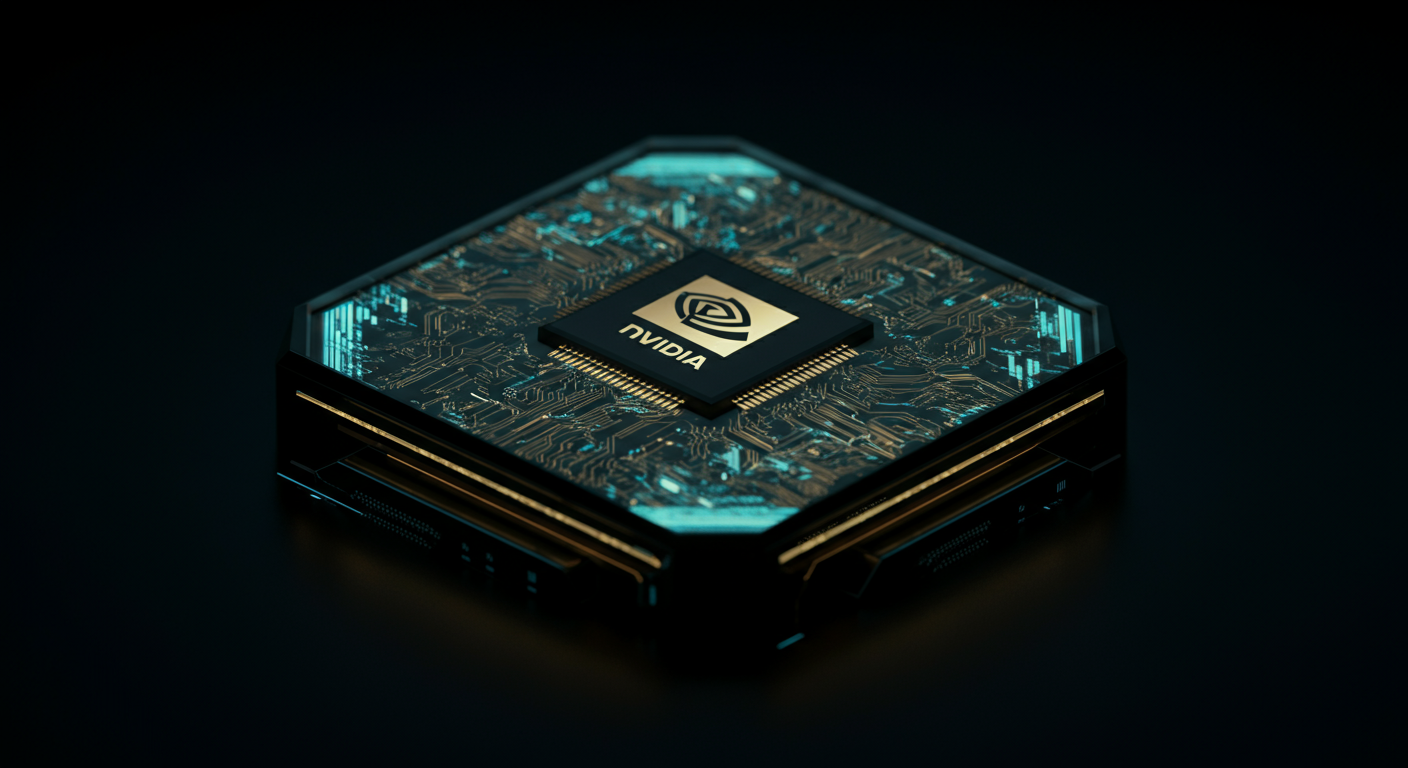Fusion 1.0: A Comprehensive Guide to AI Model Integration, Applications, and Future Potential

Fusion 1.0 aims to solve a critical bottleneck in the AI landscape: the integration of diverse AI models into a unified ecosystem.
The Integration Challenge
Integrating different AI systems is like trying to build a skyscraper with Lego bricks, Lincoln Logs, and marshmallows – messy, inefficient, and prone to collapse.- Data Silos: Each AI model often lives within its own walled garden of data, making cross-pollination impossible.
- Compatibility Issues: Models built with different frameworks or architectures can't easily "talk" to each other.
- Lack of Standardization: Without a common integration layer, developers are forced to reinvent the wheel each time they want to combine AI capabilities.
Fusion 1.0: The Bridge
Fusion 1.0 is an open architecture, modular platform specifically designed for seamless AI model interoperability. It allows developers to easily connect and orchestrate heterogeneous AI systems, unlocking entirely new possibilities. It is a vital AI concept covered in our AI Glossary.- Open Architecture: Promotes extensibility and customization.
- Modular Design: Allows developers to plug and play different AI models with minimal friction.
- Unified API: Simplifies communication between diverse AI components.
Why Now?
As AI applications become more complex, the need for unified solutions is growing exponentially. Imagine trying to build a self-driving car with isolated AI modules for perception, planning, and control – it simply wouldn't work. Fusion 1.0 addresses the critical demand for AI model interoperability, paving the way for next-generation applications across industries.By tackling AI integration challenges, Fusion 1.0 lays the foundation for a truly unified AI platform, where heterogeneous AI systems can collaborate seamlessly.
Fusion 1.0 represents a paradigm shift in AI, enabling the seamless integration of diverse models to unlock unprecedented capabilities.
Core Functionalities: Orchestration, Harmonization, and Management
Fusion 1.0 stands out with its robust core functionalities, designed to streamline AI workflows:- Model Orchestration: Efficiently manages the interaction and execution of multiple AI models simultaneously. Think of it as a conductor leading an orchestra, ensuring each model plays its part in harmony. It leverages an AI model orchestration engine for optimized performance.
- Data Harmonization: Addresses the challenge of disparate data formats by providing seamless data harmonization techniques. This ensures all models receive data in a compatible format, improving accuracy and efficiency.
- API Management: Offers a centralized API management for AI for simplified access and control of AI models.
Wide Range of AI Model Support
Fusion 1.0's versatility lies in its ability to support an array of AI model types, including:
- Machine Learning
- Deep Learning
- NLP (Natural Language Processing)
Scalability and Performance Optimization
Fusion 1.0 is built with scalability in mind, offering features such as:- Scalable AI infrastructure: It ensures consistent performance even under heavy workloads.
- Dynamic resource allocation
- Optimized inference pipelines
User Interface and Development Tools
For seamless adoption, Fusion 1.0 offers:- Intuitive user interface, designed for both technical and non-technical users.
- Comprehensive development tools, including SDKs and APIs, which facilitate custom integration and development.
- Low-code/no-code options for rapid prototyping.
Fusion 1.0 is poised to revolutionize how we interact with AI, moving beyond isolated models to seamlessly integrated systems.
Real-World Applications of Fusion 1.0: Transforming Industries with Integrated AI
Fusion 1.0's true power lies in its application across various industries, streamlining processes and boosting efficiency. Let's explore some key areas:
Healthcare
- Diagnosis: Fusion 1.0 can integrate image recognition AI with patient history LLMs for faster, more accurate diagnoses. Imagine instant analysis of X-rays coupled with a comprehensive understanding of the patient's medical background.
- Drug Discovery: By combining AI models that predict molecular interactions with those that analyze clinical trial data, Fusion 1.0 can accelerate the identification and development of promising drug candidates. This could dramatically reduce the time and cost associated with bringing life-saving medications to market. Learn more about AI in healthcare.
Finance
- Fraud Detection: Integrated AI can analyze transaction patterns, social media activity, and news articles in real-time to identify and prevent fraudulent activities with unprecedented speed and accuracy.
- Risk Assessment: Fusion 1.0 can combine macroeconomic data with individual credit histories and market trends to provide a more holistic and dynamic assessment of financial risk, enabling better investment decisions.
Manufacturing
- Predictive Maintenance: By integrating sensor data from equipment with AI models that understand material science and engineering principles, Fusion 1.0 can predict potential equipment failures and schedule maintenance proactively. This minimizes downtime and maximizes productivity.
- Quality Control: High-resolution image analysis AI can work in tandem with real-time process data to identify even the slightest defects in manufactured goods, ensuring consistently high quality.
- Return on Investment (ROI): Implementing Fusion 1.0 can lead to significant cost savings and revenue growth, with potential ROI ranging from 15% to 30% depending on the specific application and industry.
Addressing Concerns
- Job Displacement: While AI integration may automate some tasks, it also creates new opportunities in areas such as AI maintenance, data analysis, and ethical oversight. Retraining and upskilling initiatives are crucial to mitigate job displacement.
- Ethical Implications: Ensuring fairness, transparency, and accountability in AI systems is paramount. Robust ethical frameworks and ongoing monitoring are essential to prevent bias and misuse. Read more about ethical AI.
Fusion 1.0 promises to revolutionize AI by offering a comprehensive platform for model integration.
Modular Architecture: Building Blocks for Innovation

Fusion 1.0 adopts a modular design, allowing developers to plug in and play with various AI models. This is like building with LEGO bricks – you can combine different modules (models) to create complex systems tailored to your specific needs.
Imagine creating a customer service AI that combines a natural language processing model for understanding user queries with a sentiment analysis model to gauge customer emotion, all within the same framework.
Key aspects:
- Open APIs: Fusion 1.0 boasts open APIs, facilitating seamless integration with third-party tools and custom-built models. This openness encourages collaboration and accelerates innovation. The API documentation will be vital for developers.
- Data Flow: A streamlined data flow architecture ensures efficient processing and minimal latency. This architecture supports real-time applications and data-intensive tasks.
- Underlying Technologies: Built on robust technologies like TensorFlow, PyTorch, and Kubernetes, Fusion 1.0 is designed for scalability and performance.
Security and Deployment: Ensuring Trust and Accessibility
Security is paramount in Fusion 1.0, with robust measures protecting sensitive data. AI security best practices are heavily integrated, for instance.Consider these options for deployment:
- On-premise: Ideal for organizations with stringent data privacy requirements, providing full control over the environment.
- Cloud: Leverages cloud infrastructure for scalability and ease of management, suitable for rapidly growing businesses.
- Hybrid: Combines the benefits of both, allowing companies to balance security and scalability needs. Kubernetes is the platform of choice for deploying Fusion 1.0 in many cases.
Fusion 1.0 isn't just another AI integration tool; it's a paradigm shift, and here's why it's making waves.
Key Differentiators
When evaluating AI integration platforms, flexibility and scalability are paramount. Fusion 1.0 distinguishes itself through:- Open-Source Nature: Unlike proprietary platforms, Fusion 1.0's open-source nature allows for complete customization and community-driven improvements. This provides a cost-effective advantage in the long run.
- Ease of Use: Fusion 1.0 emphasizes accessibility, making it appealing to both seasoned developers and those new to AI. This contrasts with complex platforms requiring extensive coding expertise.
- Scalability and Adaptability: Fusion 1.0 is designed to handle diverse workloads, from small projects to large-scale enterprise deployments. Its modular design ensures resources are allocated efficiently.
SWOT Analysis

Here's a quick SWOT analysis to illustrate Fusion 1.0's position:
| Feature | Description |
|---|---|
| Strengths | Open-source, highly customizable, scalable, user-friendly interface. |
| Weaknesses | May require more community support initially; documentation could be more comprehensive. |
| Opportunities | Expanding into new industries, integrating cutting-edge AI models, fostering a robust developer community. |
| Threats | Competition from established AI platforms, potential for fragmentation within the open-source community, security vulnerabilities common in open-source projects. |
"Fusion 1.0 represents the democratization of AI integration, empowering developers to create innovative solutions without the constraints of closed ecosystems."
Potential Limitations
While Fusion 1.0 is promising, it's crucial to acknowledge potential limitations: building a strong, active community is critical for long-term success. High quality documentation is essential for mainstream adoption.In short, Fusion 1.0 offers a compelling alternative to traditional AI integration platforms, marked by its open architecture, flexibility, and focus on ease of use. As it matures, addressing the identified weaknesses and capitalizing on opportunities will solidify its position in the rapidly evolving AI landscape. This platform could be one of the Top 100 AI Tools in the near future.
Fusion 1.0 is poised to reshape the AI landscape, but its future hinges on a robust roadmap, engaged community, and thriving ecosystem.
Roadmap: New Horizons for Fusion 1.0
The future of Fusion 1.0 involves a strategic blend of feature enhancements and expanded integrations.- New Features: Expect advancements in model interpretability, bias detection, and explainable AI, ensuring ethical and transparent AI solutions.
- Enhanced Integrations: Planned integrations include seamless compatibility with more frameworks and broader support for diverse hardware.
- Example:Imagine Fusion 1.0 natively supporting quantum computing architectures.
Community Contributions: Power to the People
The community plays a pivotal role in directing Fusion 1.0's evolution.- Feedback Loops: Open forums and collaborative platforms are key to gather user feedback and prioritize development efforts.
- Open Source: Encouraging contributions via open-source initiatives accelerates innovation and ensures a diverse range of perspectives shape the platform.
Fostering the Fusion 1.0 Ecosystem
A vibrant ecosystem is crucial for widespread adoption and long-term success.- Developer Tools: Providing comprehensive SDKs, APIs, and documentation will empower developers to build innovative applications on Fusion 1.0.
- Business Partnerships: Collaboration with businesses across various sectors unlocks real-world use cases and drives practical applications of the technology.
Impact and Challenges
What's the big picture? And what hurdles do we face?- Long-term Impact: Fusion 1.0 could democratize AI, making its capabilities accessible to a wider range of industries.
- Keeping Pace: The rapid pace of AI innovation requires continuous learning, adaptation, and exploration of the most effective AI tools.
Unleash the power of integrated AI models with Fusion 1.0, your gateway to seamlessly blending artificial intelligence into your projects.
Downloading and Installing Fusion 1.0
First things first, grab the latest version of Fusion 1.0 from our official download page (hypothetical, as there is no tool page for Fusion 1.0). Installation is straightforward. Just follow these steps:- Download the installer package from the source.
- Run the installer and accept the license agreement.
- Choose your desired installation directory.
- Let the installer do its magic!
Configuring Fusion 1.0
After installation, configuration is key:- Launch Fusion 1.0 and navigate to the settings panel.
- Configure API keys for your chosen AI models; this often involves visiting the provider’s website and generating a key.
- Set up your preferred coding environment.
- Test the connection to ensure everything is working smoothly.
Sample Code and Tutorials
Dive into practical AI integration with these examples:- Image Recognition: Check out our Design AI Tools category to learn how to identify objects in images using a few lines of code.
- Text Summarization: Use Fusion 1.0's built-in text summarization module - think of it like an AI Writing Tools but embedded.
python
Python sample: Summarizing text
fusion = FusionAPI()
summary = fusion.summarize_text("Your lengthy article here.")
print(summary)
Support and Troubleshooting
Encountering issues? Don't worry, help is at hand:- Documentation: Head to our Learn section for detailed guides.
- Forums: Join the Fusion 1.0 support forum (hypothetical, as there is no forum) to connect with fellow users and experts.
- FAQs: Consult our frequently asked questions for quick solutions to common problems.
- Support Channels: Contact our dedicated support team (hypothetical) for personalized assistance.
"API key errors? Double-check that your key is correctly entered and activated on the provider's platform."
Getting started with Fusion 1.0 is easier than you think, setting the stage for a future brimming with integrated AI possibilities. The comprehensive documentation and supportive community ensure your success.
Keywords
Fusion 1.0, AI integration, AI model integration, Unified AI, AI platform, Machine learning, Deep learning, AI orchestration, Data harmonization, API management, AI solutions, AI interoperability, Heterogeneous AI, AI ecosystem
Hashtags
#AIIntegration #FusionAI #AIML #DataScience #ArtificialIntelligence
Recommended AI tools
ChatGPT
Conversational AI
AI research, productivity, and conversation—smarter thinking, deeper insights.
Sora
Video Generation
Create stunning, realistic videos and audio from text, images, or video—remix and collaborate with Sora, OpenAI’s advanced generative video app.
Google Gemini
Conversational AI
Your everyday Google AI assistant for creativity, research, and productivity
Perplexity
Search & Discovery
Clear answers from reliable sources, powered by AI.
DeepSeek
Conversational AI
Efficient open-weight AI models for advanced reasoning and research
Freepik AI Image Generator
Image Generation
Generate on-brand AI images from text, sketches, or photos—fast, realistic, and ready for commercial use.
About the Author

Written by
Dr. William Bobos
Dr. William Bobos (known as 'Dr. Bob') is a long-time AI expert focused on practical evaluations of AI tools and frameworks. He frequently tests new releases, reads academic papers, and tracks industry news to translate breakthroughs into real-world use. At Best AI Tools, he curates clear, actionable insights for builders, researchers, and decision-makers.
More from Dr.

